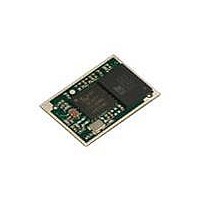DVK-BTM411 Laird Technologies, DVK-BTM411 Datasheet - Page 20

DVK-BTM411
Manufacturer Part Number
DVK-BTM411
Description
BLUETOOTH EVAL BOARD BTM411
Manufacturer
Laird Technologies
Type
Transceiverr
Specifications of DVK-BTM411
Frequency
2.4GHz
Wireless Frequency
2.402 GHz to 2.48 GHz
Interface Type
UART
Data Rate
2.1 Mbps
Operating Voltage
3 V to 3.3 V
Antenna
Multilayer Ceramic Integrated
Operating Temperature Range
- 30 C to + 70 C
Output Power
4 dBm
Technology/ Type
Development Kit
For Use With/related Products
BTM411
Lead Free Status / RoHS Status
Lead free / RoHS Compliant
Lead Free Status / RoHS Status
Lead free / RoHS Compliant, Lead free / RoHS Compliant
Other names
DVK-BTM411
Available stocks
Company
Part Number
Manufacturer
Quantity
Price
Company:
Part Number:
DVK-BTM411-02
Manufacturer:
LAIRD
Quantity:
2
BTM410/411
Bluetooth
AT COMMAND SET
REFERENCE
20 www.lairdtech.com
®
AT Data Module
2. IO-Capability (S321)
3. Force Man-In-The-Middle Protection (MITM, S322)
4. Disable Legacy Pairing (S323)
5. SSP Timeout (S324)
6. SSP Input Commands
S-Register 321 defines the IO-capability of the device. The setting is used for IO-capability negotiations
prior to SSP in order to identify whether the IO-capabilities of both devices are sufficient for MITM
protection (if required). Table 3.4 lists possible values.
Protection against MITM-attacks can be enabled by S332. This S-Register only applies if the security
level (S320) is less than 3. In case of security level (S320) = 3, MITM protection is always enabled and
this S 322 is ignored.
A new value written to S322 applies immediately. No power cycle is required.
A link key created with MITM protection is named “authenticated link key”.
A link key created without MITM protection is named “unauthenticated link key”.
If the remote device is a legacy device (BT2.0 or earlier), legacy pairing with usage of PIN codes will
be initiated. Legacy Pairing can be disabled by S-Register 323 = 1. Then pairing with legacy devices
will always fail.
The SSP timeout [s] is defined by S-Register 324. The timeout must be at least 60s to meet the BT
specification requirements [1]. This time is required to be sufficient for the user to compare or read
and input a 6 digit number. A time of 90 seconds is recommended which is the default value.
Table 3.5 lists all AT commands related to SSP input operations.
AT Command
AT+BTBY
AT+BTBN
AT+BTB012345 Enter 6 digit passkey displayed by remote device Representing keyboard input
S321
0
1
2
3
4
IO-Capability
Display only
Display yes no
Keyboard only
No input no output
Reject IO-Cap requests
Operation
Accept pairing request
Reject pairing request
Table 3.5: SSP Input commands
Table 3.4: IO capabilities
Comment
The device has the capability to display or communicate a
6 digit decimal number.
The device has the capability to display or communicate a
6 digit decimal number and at least two buttons that can
be easily mapped to ‘yes’ and ’no’ or a mechanism where-
by the user can indicate either ‘yes’ or ‘no’ (e.g. pressing a
button within a certain time limit)
The device has a numeric keyboard that can input
numbers ‘0’ through ‘9’ and a confirmation. The device
has also at least two buttons that can be easily mapped
to ‘yes’ and ’no’ or a mechanism whereby the user can
indicate either ‘yes’ or ‘no’ (e.g. pressing a button within
a certain time limit)
The device does not have the ability to indicate ‘yes’ or
‘no’, and the device does not have the ability to display or
communicate a 6 digit decimal number.
IO-capability requests prior to SSP are rejected.
Comment
Representing ‘yes’ input
Representing ‘no’ input
Laird Technologies




















